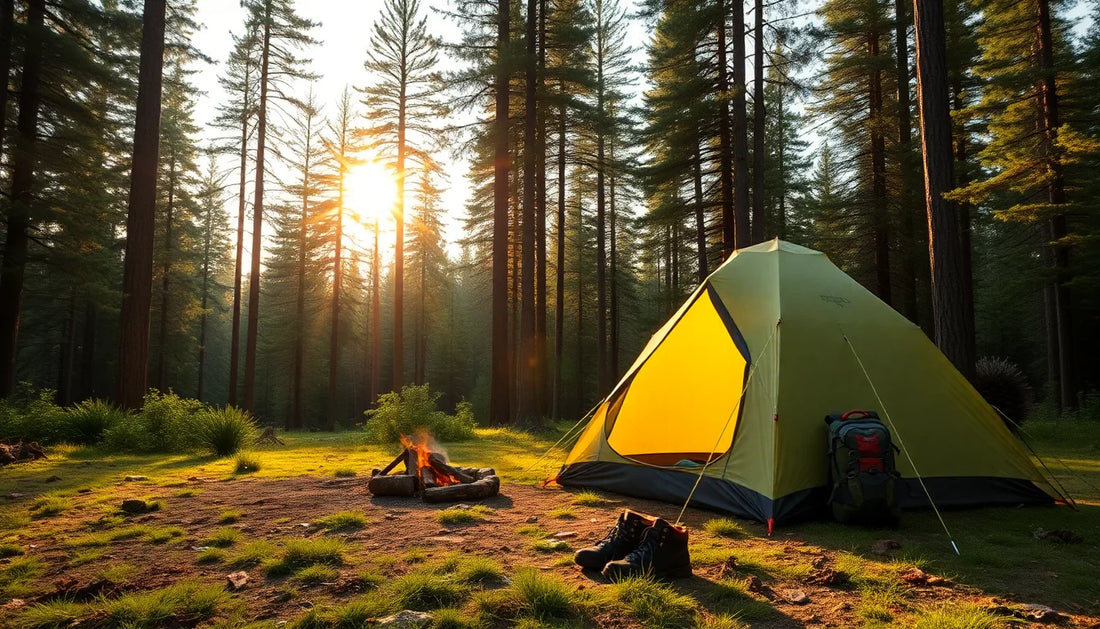
Discover the Joys of Free and Low-Cost Camping in the U.S.
Share
Camping is one of the most rewarding ways to connect with nature and enjoy the great outdoors. However, the costs associated with traditional campgrounds can sometimes put a damper on the experience, especially for budget-conscious travelers. Fortunately, there are numerous free and low-cost camping options available throughout the United States that can help you save money while still enjoying the beauty and serenity of the wilderness.
In this blog post, we'll explore the various types of free camping locations, discuss the legal considerations, and provide you with the top resources to help you find the perfect budget-friendly campsite for your next adventure.
Types of Free Camping Locations
One of the best-kept secrets in the world of camping is the abundance of free or low-cost public lands that are available for overnight stays. Here are some of the most common types of free camping locations:
National Forest Dispersed Camping
National Forests are managed by the U.S. Forest Service and offer a vast network of dispersed camping opportunities. These campsites are typically located off the beaten path, away from developed campgrounds, and are available on a first-come, first-served basis. As long as you follow the Leave No Trace principles and camp within designated areas, you can enjoy free camping in these beautiful natural settings.
Bureau of Land Management (BLM) Lands
The Bureau of Land Management (BLM) oversees millions of acres of public lands across the western United States. Many of these areas allow for free, dispersed camping, providing you with the chance to immerse yourself in the rugged landscapes and stunning vistas that these lands have to offer.
Wildlife Management Areas
Wildlife management areas are often overlooked as camping destinations, but they can be a great option for budget-conscious travelers. These areas, managed by state wildlife agencies, frequently allow free or low-cost camping, with the added benefit of providing opportunities to observe and appreciate the local wildlife.
National Grasslands
Managed by the U.S. Forest Service, national grasslands are another underutilized resource for free camping. These vast, open landscapes offer a unique camping experience and often have fewer crowds than more popular destinations.
Legal Considerations
While the prospect of free camping may seem enticing, it's essential to understand the legal and ethical considerations to ensure a safe and responsible experience. Here are some key points to keep in mind:
Camping Duration Limits
Many free camping locations have restrictions on the maximum number of days you can stay. It's important to research the specific rules and regulations for the area you plan to visit to avoid any issues.
Permit Requirements
Some free camping areas may require a permit or registration, so be sure to check with the managing agency before setting up your campsite.
Leave No Trace Principles
Regardless of the location, it's crucial to adhere to the Leave No Trace principles, which emphasize minimizing your impact on the environment. This includes properly disposing of waste, respecting wildlife, and leaving the area as you found it.
Safety and Preparation
Free camping often means being in more remote and less developed areas, so it's essential to be well-prepared. Make sure you have the necessary supplies, equipment, and knowledge to camp safely and comfortably.
Top Free Camping Resources
Navigating the world of free camping can be daunting, but there are numerous resources available to help you find the perfect campsite for your needs. Here are some of the top tools and websites to consider:
Camping Apps and Websites
Apps like FreeRoam, Campendium, and The Dyrt offer comprehensive databases of free and low-cost camping locations, along with user reviews and detailed information to help you plan your trip.
Interactive Camping Maps
Websites like FreeRoam and OnX Offroad provide interactive maps that allow you to easily identify free camping areas, dispersed camping zones, and other public land resources.
Government Land Resources
The websites of the U.S. Forest Service, Bureau of Land Management, and state wildlife agencies are invaluable sources of information on free and low-cost camping opportunities within their respective jurisdictions.
Community Camping Forums
Online forums like Reddit's r/camping and r/vandwellers are excellent places to connect with experienced campers and get insider tips on finding the best free camping spots.
Low-Cost Campground Alternatives
While free camping is a fantastic option, there are also numerous low-cost campground alternatives that can provide a more developed camping experience without breaking the bank. Here are a few options to consider:
State Park Campgrounds
Many state park systems offer affordable camping options, often with amenities like restrooms, showers, and picnic areas.
National Park Budget Sites
Some national parks have designated budget-friendly campsites that are more affordable than the standard campground rates.
Primitive Campgrounds
Primitive campgrounds, which may lack some of the modern conveniences of developed sites, can be a great way to save money while still enjoying the outdoors.
Seasonal Discounts and Passes
Look for opportunities to take advantage of seasonal discounts or purchase passes that can provide significant savings on camping fees.
Boondocking Basics
Boondocking, or dry camping, is the practice of camping on public lands without access to traditional campground amenities like electricity, water, or sewage hookups. This type of camping can be an excellent way to experience the great outdoors while saving money. Here are some tips to get started with boondocking:
What is Boondocking?
Boondocking refers to camping on public lands, such as Bureau of Land Management (BLM) areas, national forests, or other designated dispersed camping sites, without the use of hookups or facilities.
Best Locations for Boondocking
Look for areas with scenic views, access to hiking trails, and proximity to natural features like lakes or rivers. Many boondocking spots can be found on public lands in the western United States.
Essential Equipment
To enjoy a successful boondocking experience, you'll need the right equipment, such as a self-contained RV, camper van, or well-equipped tent setup, as well as a reliable power source, water storage, and waste management system.
Safety Tips
When boondocking, it's essential to be prepared for the challenges of remote camping, such as limited access to services and potential wildlife encounters. Always research the area, pack essential supplies, and be mindful of your impact on the environment.
Conclusion
Discovering the joys of free and low-cost camping in the U.S. can open up a world of affordable outdoor adventures. By understanding the various types of free camping locations, familiarizing yourself with the legal considerations, and utilizing the top resources available, you can plan unforgettable camping trips that won't break the bank. Whether you're a seasoned camper or a newcomer to the great outdoors, the opportunities for budget-friendly camping are abundant, waiting to be explored. So pack your gear, hit the road, and start your journey towards more affordable and immersive outdoor experiences.
